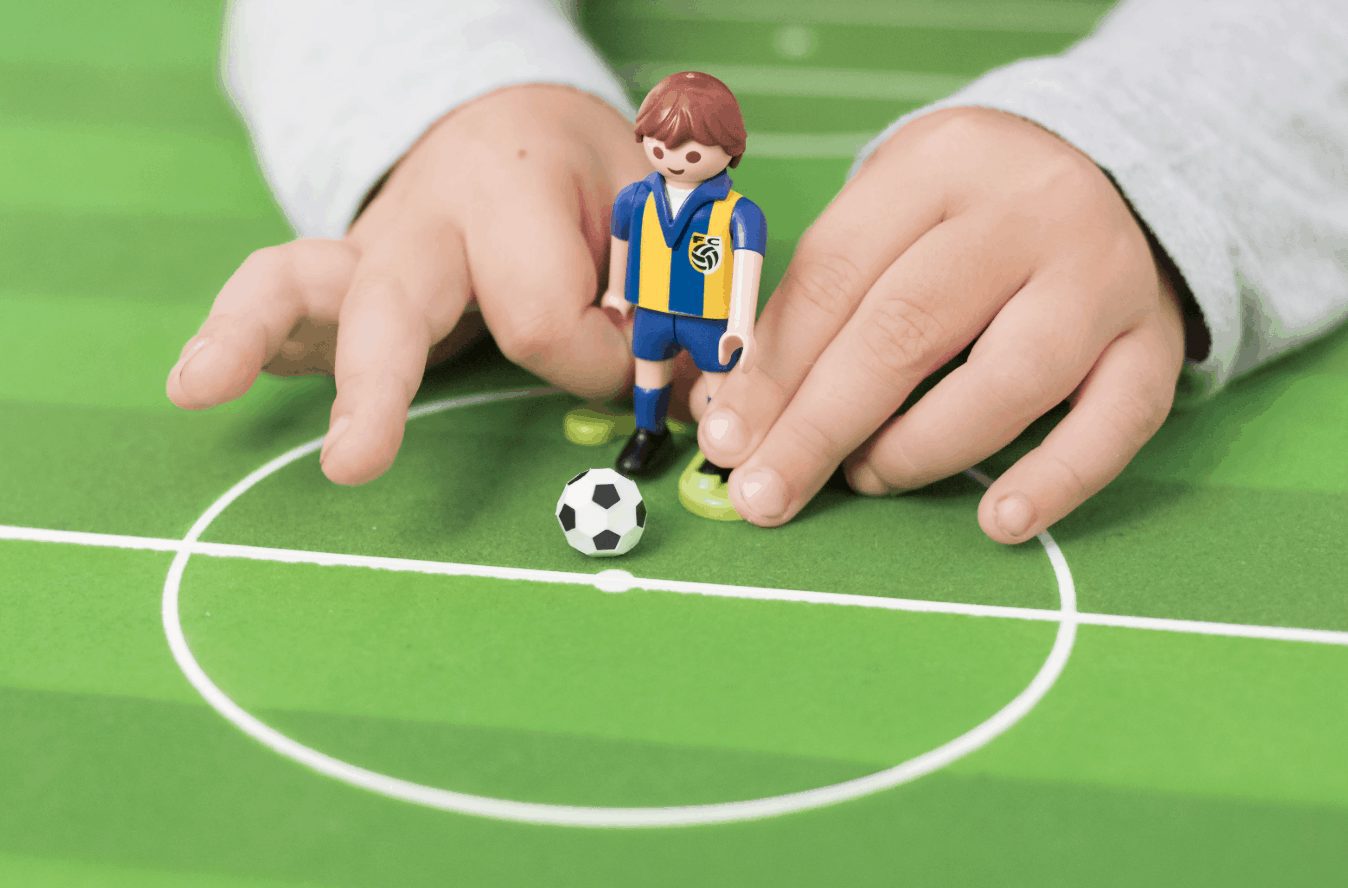Dear Peggy,
I am so happy to have this opportunity to share part of my Educational Biography with you, so that you may get to know me and some of the experiences that have shaped me into the person I am at this point of my life.
My educational journey began on a really bumpy and broken highway. After a fun experience at preschool at the Congregational church in my town, which left me with many fond memories, I began kindergarten at one of the local elementary schools. Because I lived between two of the elementary schools at that time, my mom was able to choose which school to send me to. She chose Coleytown because that school housed the Special Education offices. I needed the services of Special Education due to my processing delay, learning differences, sensory integration disorder, as well as the effects from treatment for epilepsy, which I was diagnosed with at the age of 10 months. Even though I was in special education, because my disabilities weren’t highly complex, the staff made the decision to include me in a regular classroom, otherwise known as inclusion. Inclusion is public school speak for placing a special education student into a mainstreamed classroom, and then taking the student out of that class for certain therapies, classes, or extra services.
While I loved my kindergarten teacher, Miss Bell, as well as my personal aide, Mrs. Dubee, I hated school. When we’d have circle time, and Miss Bell would talk to us all about a certain subject or topic, it would take me longer to raise my hand to ask a question because my processing delay took me longer to process the information that was given to me in the first place. By the time I would ask the question, they had already started talking about a new subject or topic. After I would raise my hand and ask my question, my teacher would always answer by saying “Erica, that doesn’t have to do with what we’re talking about now.” That really frustrated me, since my question did have to do with the previous topic. However, because it took me longer to process the information, it took me twice as long as my classmates to figure out the question I wanted or needed to ask. Even the rare times when I did raise my hand when we were still on that particular subject, I was either the last one called on, or Miss Bell would move on before calling on me and listening to my question.
Learning to read was something that wasn’t really a struggle for me, since my comprehension and vocabulary has always been above my grade level. I actually enjoyed reading with Miss Bell and a few other classmates. We’d read books like Henry and Mudge, as well as other books appropriate for kindergarteners.
Even though my comprehension was (and still is) excellent for my age, writing was a different story. I struggled with writing due to not being able to write fast and for a long period of time. I would have constant trouble spelling words. My aide would always have to stand over my shoulder and help me with spelling. If she was not there for some reason, I would just simply scribble instead of sounding the word out.
While I had all those negative experiences in kindergarten, it was also filled with its’ share of fun times. For example, I loved art, music, and going for story time at the school’s library.
By the end of half-day kindergarten, I was exhausted, emotionally drained and completely overstimulated. That exhaustion often left me too tired to go to ballet class after school, even though I was in ballet with my best friend, Haley.
Although kindergarten was very difficult for me in many ways, first grade was even worse.
The struggles I had in kindergarten with writing, I struggled with even more due to not being able to write fast and for a long time. I continued to have constant trouble spelling words (the “sound it out” and “spell it like it sounds” approach never worked for me and often caused havoc with my spelling). I had constant trouble with visual-spatial relationships and spatial awareness, like spacing between words, how much room was needed for a particular word, judging the space left until the page ended and trouble tracking lines. Because of my constant struggle with visual-spatial relationships, I would often forget to leave a space between words. Once this was brought to my attention by my aide, I would separate the two words with a cursor-like line, which would often be mistaken by my teacher and family members as a capital “I”. That misinterpretation would make people tell me that I misspelled the words, leading to more frustration for me. Like most children of that age group, my penmanship was on the bigger side. However, even though my writing was large, it was still readable for the most part.
Math was the absolute worst subject for me. While I understood addition & subtraction for the most part, I could barely grasp multiplication tables.
Division was a living nightmare for me, since I couldn’t understand it at all. When I would be solving a problem, because it was often overwhelming for me to figure out the steps needed to do the problem, my default answer for equations like 7×7 was “a lot”, even if I understood the concept. It didn’t matter if it was subtraction, multiplication, division or even more complex addition, that was the default answer I would give if I didn’t know the answer or was simply too overwhelmed to be able to figure it out.
The other thing that was frustrating for me, was the special education services the school provided for me, both in kindergarten and in first grade. As I mentioned earlier, my kindergarten aide really helped me. The superintendent at that time allowed her to come in just for me, since she was my aide in pre-K as well and I already knew her. However, before the start of my first-grade year, the superintendent changed and the new one would not allow Mrs. Dubee to continue being my aide. They insisted on having Karina, one of their existing paraprofessionals be my aide for first grade. Unfortunately, I did not find her helpful at all.
One of the other ways the special education at Coleytown failed me was when I got pulled out of my mainstream first-grade classroom. I would sit down at a long table, where I was given a pencil and piece of paper with those extra thick lines that had a raised dashed line in between the lines (the dashed lines were to aid in the correct way to print upper case & lower case letters). The special education teacher would instruct me to write about what I was going to do after school that day. Each time that direction was given, I would write a description of my after school activities. I described how I was going to go home, have a snack and then play with my favorite dollhouse in my room with my mom. The special education teacher (or Karina, at times) would say to me, “Erica, you wrote that yesterday. Write something else.” That bothered me deeply, since my after school routine was the same every day, being that I thrive on predictability and routine. What they didn’t realize is that by telling me what not to write, it would throw me for such a loop and I would basically just shut down. Karina would end up telling me what to write, which of course, wasn’t even close to what I was thinking of writing.
All of this took its toll on me, especially emotionally. Just about every day, upon returning home, I would cry and download my frustrations onto my mom. My descriptions of daily frustrations at school helped my mom realize the havoc that public school was wreaking on me. My mom soon realized that the school’s approach was not addressing either my emotional needs or my educational challenges. These factors made my parents decide to pull me out of public school. I finished first grade at Coleytown and left for summer vacation, very happy that I would not be returning for second grade in the fall.
My mom decided to homeschool me for second grade, since the private school she thought would be good for me, Eagle Hill Southport, did not have room for me to attend until the next year. That year was pretty stress-free for both my mom and me, as far as education was concerned. My mom did join a few homeschooling groups and we did a few field trip activities with them, some of which my mother organized. Early on in the homeschooling process, after trying the method of following the similar structure as public school, my mom figured out that that particular style was not at all the way I learned best. She tried the unschooling method with me, and that was the biggest success. My mom went at my pace, taking her teaching cues from me, and I began blossoming and learning things that I hadn’t been able to master in public school.
During second grade, I began therapeutic riding sessions with Pegasus Therapeutic Riding. I was very anxious about riding, but my mom promised me that if I got on the horse and didn’t like it, I could get right off. That reassured me. A few weeks later, I mounted one of the therapy horses for my first session, and with the help of others walking alongside me, rode the horse around the ring, wearing the biggest smile.
I fell in love with horses and riding, or as the saying in the horse world goes, “I caught horse fever!” My therapeutic riding sessions with Pegasus continued weekly and I went from needing three people walking with me, to only one person leading the horse and one person on my side, and finally, down to only needing someone leading the horse.
Later that summer, the summer before I was to start Eagle Hill, the school thought it would be good for me to attend summer school there. Summer school wasn’t too bad, except for the fact that my math teacher wasn’t helpful at all. Besides that, who wants to spend their summer at school?
Shortly before school started in the fall, I went to meet with the headmaster one afternoon. I remember asking him, “Will I get to have show and tell?”, since “show and tell” was my favorite thing from first grade. He didn’t answer my question at all, but rather gave me a “run around” type of answer. I had so much anxiety afterward because all I wanted was a straight answer from the headmaster about “show and tell”.
I started Eagle Hill that September, when I was 8, and right from the beginning, I had struggles during each school day. For instance, when the bell rang, the loud sound of the bell would scare and bother me so badly, that I would have a panic attack trying to get my trapper, homework, etc. off the desk, so I could go onto my next class. If the students came into the classroom I was trying to leave, all chaos would break out in my mind. By the time I’d eventually get to my class, I’d not only still be in a flustered state, I was also late. This made most of the teachers get on my case for being tardy. There was also one instance where one of the older boys walked over to the desk I was gathering my things off of, and in this really mean and rough voice, barked, “Leave!” at me. That was so startling and scared me so deeply, that I was even later and more emotional going into my next class than normal. The kid scared me to tears, yet the teacher whose class I was exiting, did nothing! I thought that was such a horrible way for him to handle that situation.
For my first year, I was assigned to Miss Hontz her for Tutorial class. We were doing our “contracts” which were more like reports, on US states. I was drawing a picture of the state I was doing mine on for the front page of my contract. I raised my hand and asked Miss Hontz what color that particular state was. Since I had noticed that most classroom maps of the 50 states have each state a different color, I thought this was a very logical question. She replied to my question by asking, “What do you think?” in a voice that implied, ‘How could you be so stupid to think that states are a certain color?’ Upon returning home that afternoon, I was completely fried and upset. I was up in my room with my mom and we were playing with my favorite dollhouse. I was so upset from what Miss Hontz said and how she made me feel, that I had the biggest meltdown and I told my mom that I didn’t want to be in her class anymore. My mom saw my distress and called my advisor’s office and left a message on her machine, explaining the situation. She also said in the message that she would greatly appreciate it if I could be switched to a different class with another teacher. I was indeed switched to a different class, but first, my advisor had to interrogate me about why I needed to switch out of that class, making me feel even worse than I did when Miss Hontz said that to me. To make matters worse, for each of the next two years, I was assigned to Miss Hontz’s class and my mom would once again, have to call my advisor, and get me switched.
Each student at that school was assigned to a particular advisor for all the years the student attended the school. I was assigned Mrs. Grant and she was my advisor for all three years I was there. The role of the advisors was to help students with anxieties, issues they might have in a school day, etc. As a child, and especially during the three years I was at Eagle Hill, I had a lot of anxiety, trouble with time management skills, and lots of fears, (especially a fear of being kidnapped, which probably stems from my seizures and frequent hospitalizations at an early age). Mrs. Grant, while being a very nice person, wasn’t helpful to me with anything, no matter what the problem. Rather than helping me solve some of the issues I faced, I always felt as if she was blowing me off and discounting me.
It was hard for me to learn at Eagle Hill, mainly because none of the teachers, my advisor, nor anyone else for that matter, succeeded at educating me as a whole child; not just mentally, but physically and emotionally as well. Even though there were one or two teachers at Eagle Hill that I did like, it is unfortunate to say that they too, failed to educate me as a whole child, body, mind and spirit. They didn’t seem to understand the impact of noise, environment, schedule deadlines, peer group challenges and positive reinforcement on my success or failure in learning.
Speaking of educating the whole child, the physical education program at Eagle Hill, a school for kids with learning disabilities, left much to be desired. Their so-called “adapted” physical education, in my opinion, was beyond awful. I felt it was awful because they didn’t know how to adapt physical education to each student’s individual needs. Even when my parents and my physical therapist complained that they needed to adapt it more for me, they gave my parents lip service. For instance, it had taken me years of working with various therapists to help me even be able to perform some of the most basic physical maneuvers. Every day, for as long as I could remember, I did numerous exercises, with therapists, with my mom, as well as alone, to begin to be able to move my limbs across the midline of my body, or to balance on one foot, or move my eyes without moving my entire head or body. And yet, despite Eagle Hill being aware that I had these, and other problems and gross-motor challenges, they forced me to play soccer on their travel team.
Even though a few of my friends were on the team with me, practice was torture for me for numerous reasons. First of all, to warm up, the coaches made us do jumping jacks. I would always freeze inside because I wasn’t coordinated enough to motor plan how to do one jumping jack, never mind 10 in a row. Secondly, we had to run around the baseball diamond that was in the other corner of the field. At that point of my life, I couldn’t run far at all because I had such low muscle tone. So after taking just a few steps, I would feel as though I was going to collapse. Trying to motor plan running, as well as attempting to get my body to work rhythmically, seemed impossible to me. I was always lagging far behind all the others, and was physically drained to boot. Thirdly, and as silly as this may sound, there was a convalescent home next to the area of the field where we would have to run. I didn’t know it was a nursing home, and therefore I was convinced it was a psychiatric hospital and that one of the patients would hop the fence and kidnap me, and that no one would rescue me. This fear made the task of running before practice even worse.
Once we actually started practicing, things only got much, much harder for me. Not only was it difficult enough for me to run, but the combination of having to kick the ball, judge the amount of force needed, figure out where I wanted to kick it, along with the overwhelming noise of my teammates screaming “kick it to me” while the coaches were telling me to kick it somewhere else, was practically impossible for me. Rather than being able to perform what was being required of me, even at some basic level, I would just shut down, because I was so overwhelmed and over-stimulated.
Making things worse, was the constant yelling by my coaches, all too often because they had to correct and “discipline” one of the boys on my team. As if all of this wasn’t taxing enough for me, the soccer field was on a busy road, which meant that cars, trucks and motorcycles were whizzing by all afternoon long. Since I have always struggled with auditory processing, and have acute hearing (I’m not called ‘Bugs Bunny’ for nothing!), this added traffic noise just further complicated my ability to perform physically. All of these factors not only made practice extremely hard for me, but games as well. Since my eyes could not track objects as they came towards me, at that point in my life, seeing 20 players running towards me was a lesson in confusion, panic and turmoil. Not only would I lose track of them, but I could not predict where they would go and what they would do, nor did I have the skills to react and adjust myself accordingly.
In an attempt to continue to have me participate and be a part of the team, my mom asked the school to simply let me be the water girl or scorekeeper. Yet they refused, taking the stance that I needed to keep playing on the chance that someday I might be a true soccer player! That position seemed totally ridiculous to my parents, my therapists, and me as well, even at the young age of 8! It finally got to the point, after weeks of struggling, where I would constantly ask my mom to fill in the permission slip saying that I didn’t have to go to the games.
On rainy days, or during the winter months, we would all have indoor gym in the local YMCA. It is hard to believe it would be possible, but I actually hated gym more than soccer. Because of the physical struggles I previously mentioned, along with other physical challenges, it was torture. I could not follow the dance and yoga steps, do the required push-ups, or not always get hit in the face while playing dodgeball.
As my 5th grade year (my third year at Eagle Hill) started to end, I was at the end of my rope and needed to leave. Of course, it was a buildup of the day-to-day struggles, but the two things that were the “straws that broke the camel’s back” were the ways they handled soccer and having to read Harry Potter. For me, a child who had always struggled with anxiety and fear, who had always been scared of the dark, who had visions of people coming through the windows to steal me, the last thing I felt comfortable reading was a book about wizards, magic, and evil. I had spent a good deal of energy trying to overcome the many fears I had. Reading a fantasy book filled with fearful beings and events would not have been something I could have emotionally or mentally handled at that point in my life. The school completely disagreed, taking the position that it was part of life and I would need to learn to deal with it at some point, so it might as well be then. While I now understand their position, I was not in a place at that time to be able to handle that challenge. Finally, one day, I came home from school and told my mom that I wanted to leave Eagle Hill. After talking about it for a bit, both my parents and I agreed that homeschooling would be best.
The decision to leave was not without mixed feelings, because my friend Shannon started there at the beginning of that year, and we had become best friends. Even though it was difficult to leave my new best friend, in my heart, I knew that leaving would be best, especially in the long run. I informed my adviser that this would be my final year at Eagle Hill, and told her that I’d be homeschooled next year. She frowned upon the fact that I would be homeschooled. At the school’s end of the year ceremony, they handed me my engraved nameplate that served as the ID on my locker, a folder with a “diploma”, and a fabric “E” letter patch (the kind for varsity jackets). I was extremely happy to be out of Eagle Hill. No longer did I have panic attacks on Sunday nights or on the last day of Christmas break. I became much happier and less stressed every day. Just as in second grade, my mom and I did the unschooling approach, which once again worked wonders. I continued to see Mike, my physical therapist, who is actually a Certified Adapted Physical Educator. My sessions with him were twice a week for an hour. I also continued to ride with Pegasus Therapeutic Riding on Thursdays, which I loved as well. The highlights of my week were going riding and seeing Mike.
In the 11 years since I’ve been unschooling, I have seen a transformation in my learning and myself. Most of, if not all of the things that I couldn’t get in public and private school, due to a lack of individualized education and instruction, I have been able to learn. I would have never been able to understand these things, had I not been unschooled by my mother. She has helped me to see that I can learn and overcome challenges and get to the next level. I’ve been able to learn without being forced or threatened, but by taking myself exactly where I am and making incremental steps to each new level. She has helped me to better understand myself, and to be kind and accepting of myself, just as I am today. She has taught me that, at times, I am just not ready to take a new step. She has given me the courage to be okay with that, and the wisdom to understand if that is so in the particular circumstance. She has helped me to not be ashamed to stand up for myself, and taught me how to better advocate for who I am and what I need. Without the gift of homeschooling, I would never have had the time to spend with my mom, who has believed in me more than anyone else I know. I would also never have had the time and space I needed to get to know myself and how I learn and function best.
As well as making academic and emotional progress in multiple “subjects”, I have made tremendous gains physically. I still work with Mike twice each week (I’ve been his student for 13 years and counting). If I were to list all the things he has taught me, my bio would be about 40 pages long, so I’ll condense the list slightly. He taught me to ride a bike (at age 13 ½), and we often go on bike rides together in the summer months to work on these skills even more. Mike also was able to teach me how to do things on the trampoline, like sit drops and knee drops, as well as how to do what we call a “combo”; which is a knee drop, then right into a sit drop, or vice-versa. He also taught me a few “games” that he thought up himself. My favorite game, which I will request by name, is “the clock”, in which Mike stands by the edge of the trampoline at “12:00”. I then begin jumping in the center and he calls out a number on the clock, and then I face 12:00, do a sit drop, pivot and spin to the number he called out, bounce up from the seat drop and continue jumping until he calls out another number. Thanks to Mike and his patient teaching style I am now able to throw and catch a ball, both with a baseball glove, as well as with two hands, sans the glove. My absolute favorite activity that Mike and I do is play catch. I was very young when Mike first taught me to throw and catch, and all my memories of playing catch with him are 100% positive, so it is a very enjoyable activity for me. Knowing how much I love catch, Mike will often suggest playing a game when I become upset, in order to turn my mood around. This “strategy” of his works without fail! On the days when inclement weather or cold temperatures force us to have our sessions indoors, we work in my basement, where I have various pieces of therapy equipment (therapy balls, a platform swing, balance board, “wobbler”, as well as other activities and small games).
Even though Mike is my Adapted Physical Educator/Physical Therapist, he has taught me many things not directly related to physical education. He has taught and helped me to become a better listener. He has helped me become more patient and compassionate towards others. Mike has made my social skills stronger and helped me become a better friend to others. He is my personal “Dr. Phil” and “Mr. Fix-It”. Mike is the one I often turn to when I need to vent or need advice. He has made my confidence soar, given my dreams wings and believed in me when I didn’t believe in myself. Mike has been there for me through everything and I thank God for him and for all the things I’ve learned from and with him.
The other area that I have made remarkable progress in is horseback riding. Soon after starting unschooling, I “graduated” from therapeutic riding, and moved on to regular, “able-bodied” horseback riding. It wasn’t long before I began cantering and jumping, not only with an instructor who had a background in teaching riders with disabilities, but with the strength and help of a Quarter Horse mare named Stevie. Stevie was very patient with me, and helped me build my confidence, not only as a rider, but as a person as well. During those years, my then instructor Carol moved to Maine, and I continued riding my beloved horse Stevie under the tutelage of Barb, another riding instructor that had worked with Carol for years. Under Barb’s patient and kind instruction, I won a few blue ribbons with Stevie, but we mostly won each other’s trust and hearts. Altogether, I had Stevie as my “partner” for 3 to 4 weekly rides over the course of 3 wonderful years. Shortly after my sixteenth birthday, Stevie, who was in her late twenties (which is almost 90 in horse years), retired and moved to upstate Connecticut. I was beyond devastated. I felt as though a piece of my heart had been torn out of me, and I was convinced that I would never again be able to find another horse with whom I would share such a special bond of friendship and trust. After trying a few other horses that I didn’t match well with, Barb, who is very aware of my disabilities and understanding of me, told me that she wanted to put me on Casey and see how Casey and I meshed together. I went up to the barn on May 9, 2006, and tacked up (put the saddle and bridle on) Casey, a beautiful 15.1 ½ hand (5’1½”) Appaloosa/Quarter Horse gelding. I mounted Casey for my lesson, and immediately felt comfortable with him. It was as if I was on Stevie again. Of course, Barb noticed how comfortable I felt with Casey, both mounted and dismounted. I fell “head over heels” in love with him. Ever since that day, I have been riding Casey and we have a bond and a chemistry that is so incredibly deep. Casey entered my life at a time when I needed him most, and he has truly saved my life. If it wasn’t for Casey, I wouldn’t have felt comfortable advancing my riding, and in turn, it would’ve made it difficult for Barb to teach me more advanced things.
Aside from the tremendous joy and the skills and techniques that I learn in my weekly lessons, horseback riding has taught me many things like self-reliance, patience, time management, and has enriched my social skills (which has resulted in numerous friendships with others at the barn), just to name a few. Some of these “life skills”, such as self-reliance, patience, and social skills, I already had, but they weren’t concrete and I would sometimes fall behind in them. Other skills, like time management, I didn’t have at all, nor did I have a basic foundation to build on. Riding has also taught me what’s most important in life, meaning that while it’s always nice to be the best or do well in a competition, life isn’t about winning or being the best. Once I realized and accepted that “winning isn’t everything”, I became a happier person. The TV cartoon character SpongeBob Squarepants put it so well…he said, “It’s not about winning, it’s about fun.” Oh so true!
Because of homeschooling/unschooling, my mom and I have been able to do various forms of arts and craft projects, enriching and developing my creative skills and love for art. I am a self-taught jewelry designer, and I create pieces using Swarovski® crystal and glass beads, accented with Sterling Silver components. One of my creations is a beaded Swarovski® bracelet, with two “lobster claw” closures, that attaches to the ends of a Medic Alert® bracelet medallion. My inspiration came from wearing a medical bracelet for as long as I can remember, and wanting it to look prettier than a plain, flat link-style chain.
I also love drawing, and I will spend hours doodling in my sketchbook with a pencil. Horses are my subject of choice, but I’ve drawn tropical scenes, flowers, models, etc. Some of my drawings get transferred onto canvas and painted, or simply outlined using a fine tipped Sharpie® and then colored in. When my parents and I go on long car trips, I listen to my iPod, get out my sketchbook and pencil and sketch away.
I love graphic design and have developed a wonderful eye for digital designs. Over the years, I have been tutored in two graphic design programs, Photoshop and Illustrator, by two graphic artists. I have incorporated these two forms of art to design logos for family and friends, for digital scrap-booking, invitations and announcements, stationery, gifts for friends, etc. My mom taught a class at our church and I used my graphic design skills to put together the stationery for the class handouts and notebooks.
I also write poetry, both for fun, and to help express myself. I write my poems in a college-ruled notebook, then type the poem using Microsoft Word. I will often add a header, using my graphic design skills. I would frame the typed copies of poems that I’ve written about important people in my life, and give them as heartfelt gifts. Mike, among others, has received many of them and the recipients tell me how much my poetry touches them. That’s because it’s not just a bunch of words that I magically make rhyme; rather, my poems are gifts from my heart to their heart.
Another favorite art form of mine is ceramics. I frequent the paint-your-own pottery shop near my house and have made lots of pieces, both for myself and as unique, heartfelt, personalized gifts for family members and friends. I paint a lot of mugs for myself and others, being that they are very useful. I combine my love and talents in sketching, drawing and graphic design when creating my piece, whether for myself or for a gift.
While there are many other details I would love to share, I am so glad to have had this opportunity to share this brief overview of my educational biography with you. I hope you enjoy reading it as much as I have found pleasure in composing it, and I trust that it will serve as a colorful introduction to who I am and what makes me tick. I look forward to sharing with you my monthly reports, and giving you a glimpse of some of the newer growth and learning that is taking place in my life at the present time.
Fondly,
Erica
 My Papa was the person who taught me many of the things that I enjoy most: fly fishing (even the ability to clean and cook the fish once caught – he had the ponds at his ranch stocked with fish each year so that we would always have a place to spend time together), how to hunt (be safe with guns, shoot them, take care of them, and on adventures to places like the One Shot Antelope Hunt in Lander, WY where we were able to meet Governors, astronauts, artists, and many other amazing and inspiriting friends of his), and a passion for reading. I believe our many trips and adventures were a magical part of my education as it taught me numerous life skills, as well as experience in real world travel and exploration. He passed away several years ago, I miss him terribly and wish that he were still here to see all that I have become and accomplished. Though I miss Collbran, our move to Grand Junction has benefited me greatly in my schooling with the option of having co-op classes and career options more readily available
My Papa was the person who taught me many of the things that I enjoy most: fly fishing (even the ability to clean and cook the fish once caught – he had the ponds at his ranch stocked with fish each year so that we would always have a place to spend time together), how to hunt (be safe with guns, shoot them, take care of them, and on adventures to places like the One Shot Antelope Hunt in Lander, WY where we were able to meet Governors, astronauts, artists, and many other amazing and inspiriting friends of his), and a passion for reading. I believe our many trips and adventures were a magical part of my education as it taught me numerous life skills, as well as experience in real world travel and exploration. He passed away several years ago, I miss him terribly and wish that he were still here to see all that I have become and accomplished. Though I miss Collbran, our move to Grand Junction has benefited me greatly in my schooling with the option of having co-op classes and career options more readily available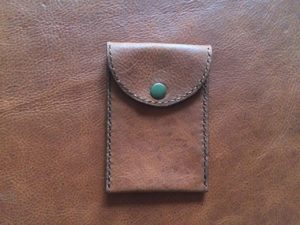 During my early education, I also had the occasion to participate in 4H as well as being a counselor at the local church camp on the Grand Mesa. Since we lived in a town where agriculture was the majority of income for most families, we had a local FFA and a 4H club. I thoroughly enjoyed my time participating in the leather craft area of 4H. My leader was a local woman who was as brilliant at leathercraft as she was kind. I am thankful for the time and commitment she put forth, and how she inspired me to greatness (after several years and a culmination of projects, I won Mesa County Grand Champion and Reserve State Grand Champion for a tissue box cover with a wildlife scene inspired by the area in which we lived. My time as a participant and counselor at the church camp impacted my world in a remarkable way and ran the course of six years. It was an event to which I looked forward with tremendous anticipation each year, progressing from a camper to a junior counselor for elementary school, to a counselor for middle schoolers. I would spend hours making preparations, marking verses to be memorized, planning activities, and making sure things ran smoothly so the camp experience for those that I was counseling would be as moving and life changing as it was for me. These summers were some of my favorite times, making me feel like I was doing something with a purpose when I was teaching all the younger kids about God.
During my early education, I also had the occasion to participate in 4H as well as being a counselor at the local church camp on the Grand Mesa. Since we lived in a town where agriculture was the majority of income for most families, we had a local FFA and a 4H club. I thoroughly enjoyed my time participating in the leather craft area of 4H. My leader was a local woman who was as brilliant at leathercraft as she was kind. I am thankful for the time and commitment she put forth, and how she inspired me to greatness (after several years and a culmination of projects, I won Mesa County Grand Champion and Reserve State Grand Champion for a tissue box cover with a wildlife scene inspired by the area in which we lived. My time as a participant and counselor at the church camp impacted my world in a remarkable way and ran the course of six years. It was an event to which I looked forward with tremendous anticipation each year, progressing from a camper to a junior counselor for elementary school, to a counselor for middle schoolers. I would spend hours making preparations, marking verses to be memorized, planning activities, and making sure things ran smoothly so the camp experience for those that I was counseling would be as moving and life changing as it was for me. These summers were some of my favorite times, making me feel like I was doing something with a purpose when I was teaching all the younger kids about God. Progressing through school, taking more intellectually challenging math and science classes and realizing my strength in those areas, I have begun to discern the path I desire for my future. My adeptness at problem solving, calculations, scientific analyzation, and the capacity to understand the working mechanisms of machines has led me to the conclusion that I aspire to become a Mechanical Engineer. I am in the process of applying to several universities in Colorado including Colorado Mesa University, Colorado School of Mines (which is the third highest ranked petroleum engineering school in the United States), and Colorado University Boulder. My goals for high education are to receive a bachelor’s degree in Mechanical Engineering degree, while also acquiring a minor in Physics.
Progressing through school, taking more intellectually challenging math and science classes and realizing my strength in those areas, I have begun to discern the path I desire for my future. My adeptness at problem solving, calculations, scientific analyzation, and the capacity to understand the working mechanisms of machines has led me to the conclusion that I aspire to become a Mechanical Engineer. I am in the process of applying to several universities in Colorado including Colorado Mesa University, Colorado School of Mines (which is the third highest ranked petroleum engineering school in the United States), and Colorado University Boulder. My goals for high education are to receive a bachelor’s degree in Mechanical Engineering degree, while also acquiring a minor in Physics.

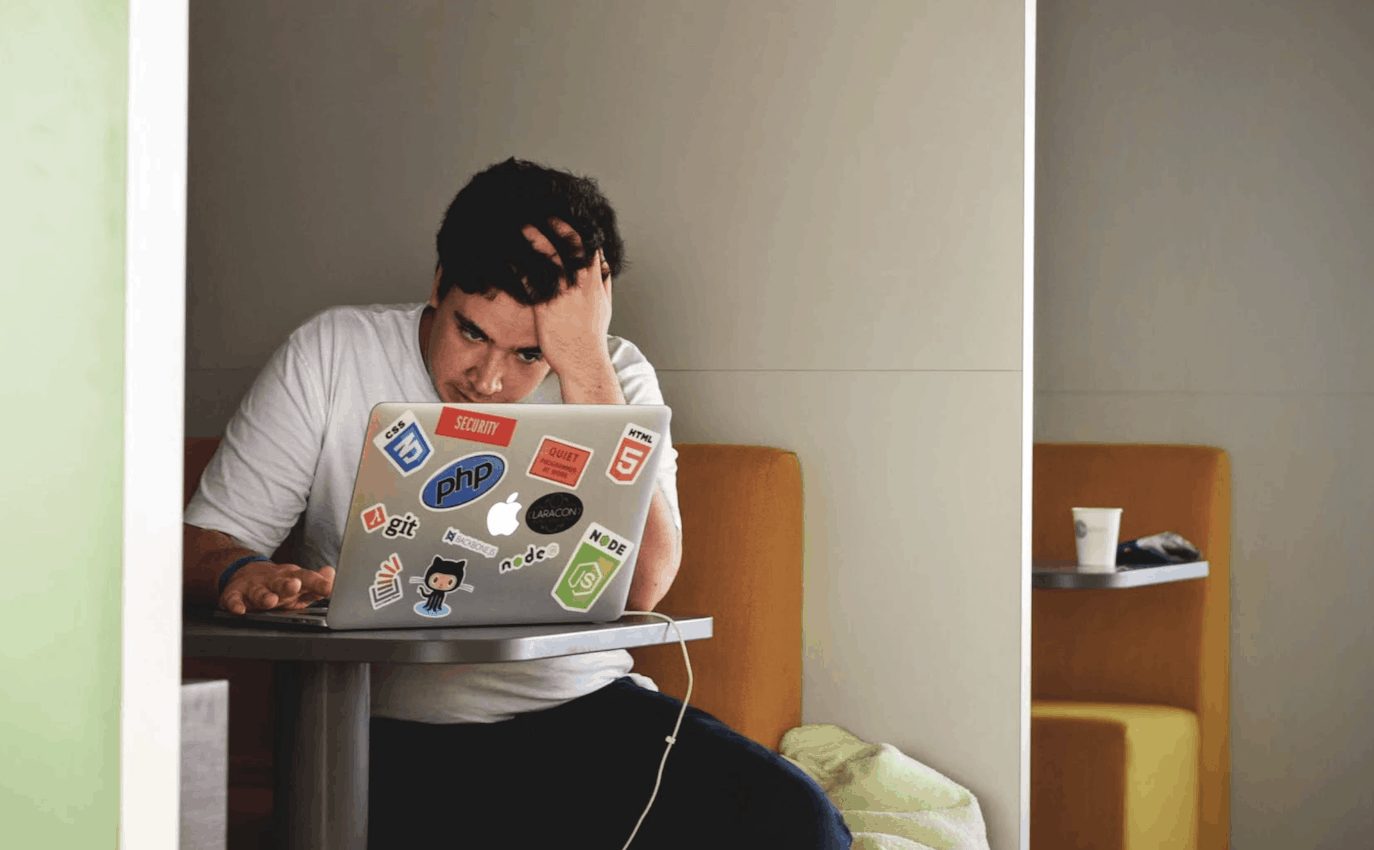
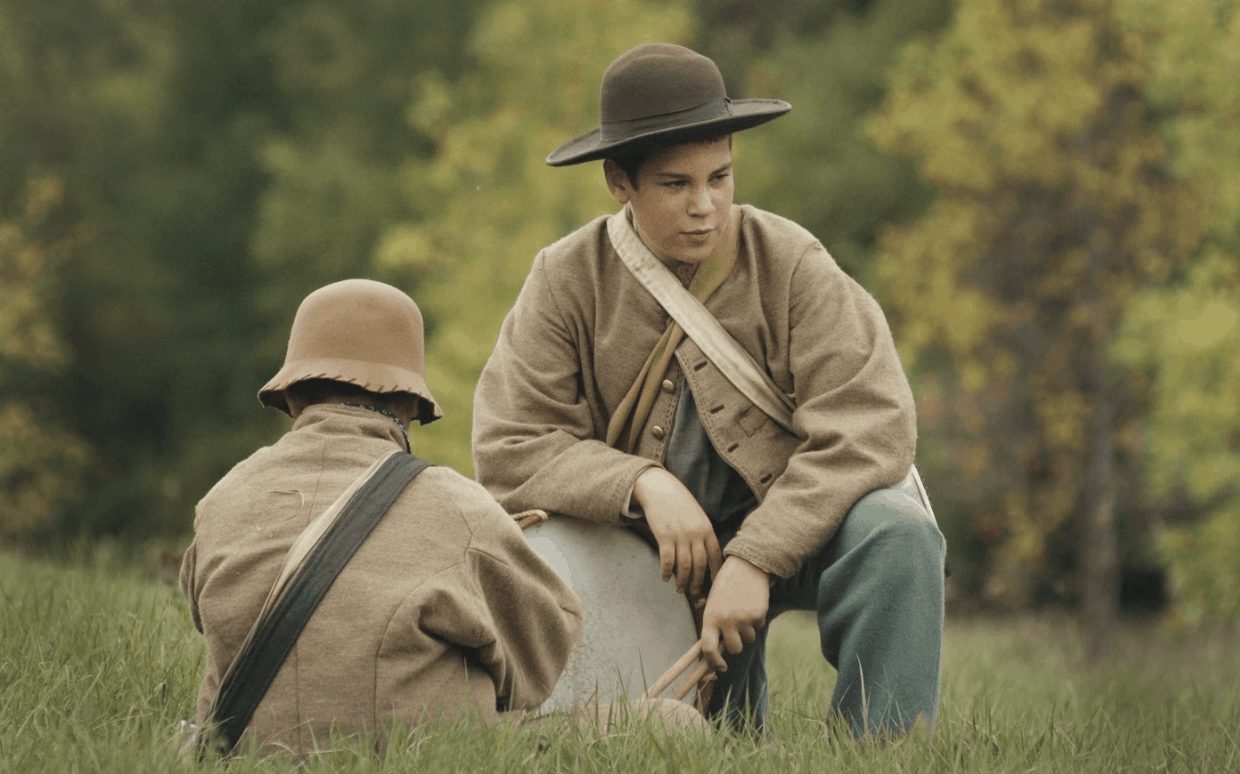


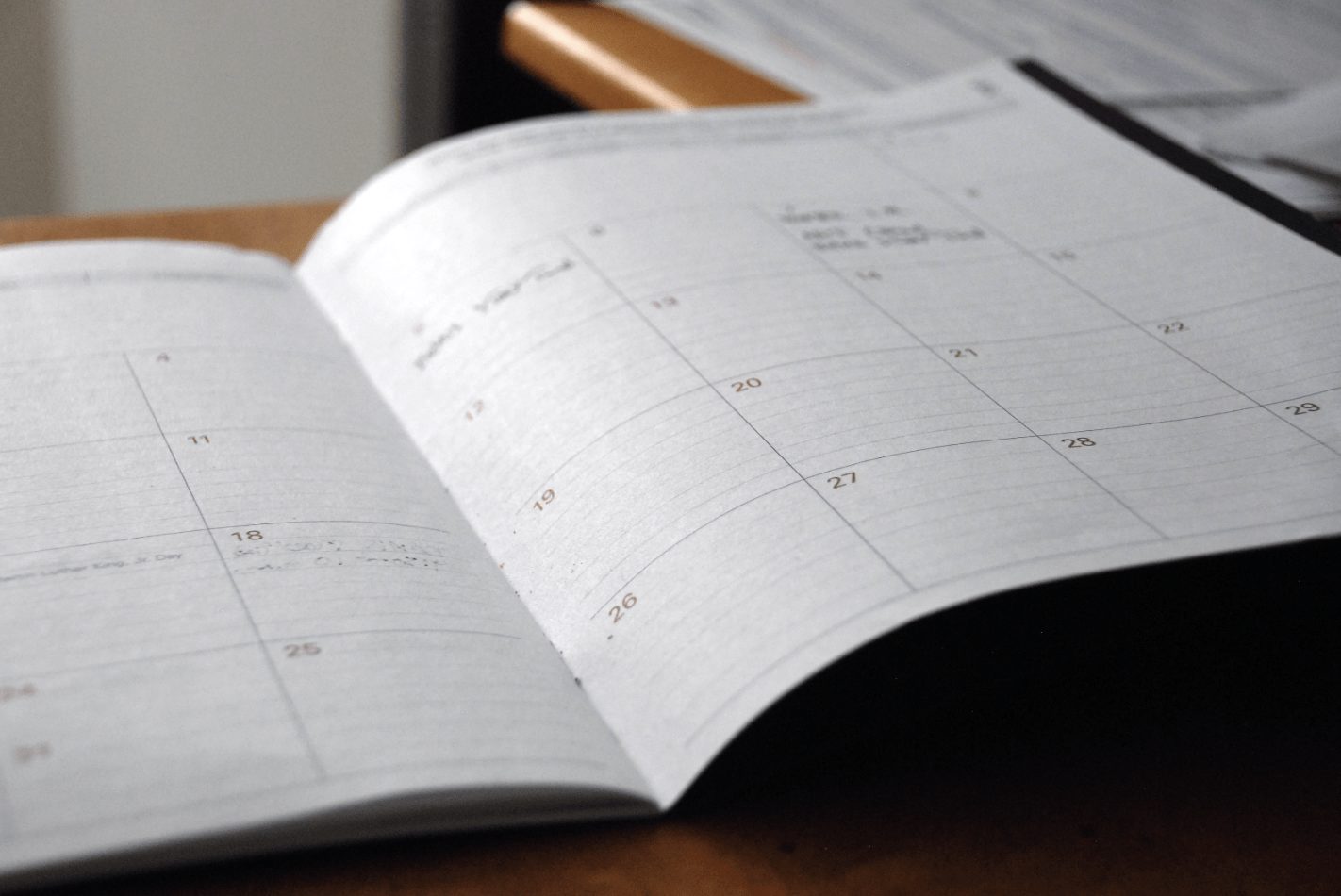

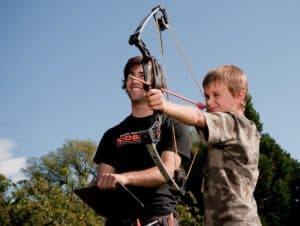
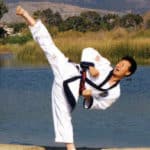 Martial arts has helped me learn many things as well: from balance and a bit of Korean, to morals such as honesty and integrity. The martial art I am learning is Tang Soo Do. The people at the studio are all really nice and excellent instructors willing to help someone who wants to learn. Tang Soo Do is an important part of my life, and I plan on continuing it as long as possible. The atmosphere of encouragement and support from those at the studio is unique in the Tang Soo Do community, and is something I carry inside of me even when I am not there. I hope to some day pass on the traditions of Tan Soo Do. Through Tang Soo Do I have been able to improve my leadership skills by leading the students in various warm-up exercises and by helping some of the lower-ranked students improve their forms and techniques. This has also helped me to gain more confidence in myself.
Martial arts has helped me learn many things as well: from balance and a bit of Korean, to morals such as honesty and integrity. The martial art I am learning is Tang Soo Do. The people at the studio are all really nice and excellent instructors willing to help someone who wants to learn. Tang Soo Do is an important part of my life, and I plan on continuing it as long as possible. The atmosphere of encouragement and support from those at the studio is unique in the Tang Soo Do community, and is something I carry inside of me even when I am not there. I hope to some day pass on the traditions of Tan Soo Do. Through Tang Soo Do I have been able to improve my leadership skills by leading the students in various warm-up exercises and by helping some of the lower-ranked students improve their forms and techniques. This has also helped me to gain more confidence in myself.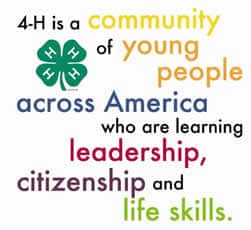 I was eleven when I started 4-H. At first I wasn’t sure whether I would like it or not because it seemed more like an activity my sister would enjoy. After the first few years, though, I started to really enjoy 4-H. Although our club wasn’t very big I still met quite a few people and had numerous opportunities to participate in community events. During my time in 4-H, I learned a great deal about animals (that was my club’s specialty), volunteer work, and how to work with groups of people. I even got some awards in the process. One of the more difficult things I did in 4-H was volunteer at the fair’s Petting Zoo. While it was frustrating at the time because of the high number of young kids, looking back on it I felt it was enjoyable and quite a learning experience in crowd-control and keeping the cavies (guinea pigs) safe. The animals I raised were cavies. Many people in the club had rabbits, cavies, and poultry (chickens, ducks, and turkeys). I had two cavies. Though other people in the club had more animals, I still learned the responsibility of animal ownership. I was also able to participate in fun community service projects through our club, such as: making no-sew fleece blankets for a children’s shelter, designing cards for soldiers, making holiday cookies for the fire department, and sharing my cavies with children at petting zoos.
I was eleven when I started 4-H. At first I wasn’t sure whether I would like it or not because it seemed more like an activity my sister would enjoy. After the first few years, though, I started to really enjoy 4-H. Although our club wasn’t very big I still met quite a few people and had numerous opportunities to participate in community events. During my time in 4-H, I learned a great deal about animals (that was my club’s specialty), volunteer work, and how to work with groups of people. I even got some awards in the process. One of the more difficult things I did in 4-H was volunteer at the fair’s Petting Zoo. While it was frustrating at the time because of the high number of young kids, looking back on it I felt it was enjoyable and quite a learning experience in crowd-control and keeping the cavies (guinea pigs) safe. The animals I raised were cavies. Many people in the club had rabbits, cavies, and poultry (chickens, ducks, and turkeys). I had two cavies. Though other people in the club had more animals, I still learned the responsibility of animal ownership. I was also able to participate in fun community service projects through our club, such as: making no-sew fleece blankets for a children’s shelter, designing cards for soldiers, making holiday cookies for the fire department, and sharing my cavies with children at petting zoos.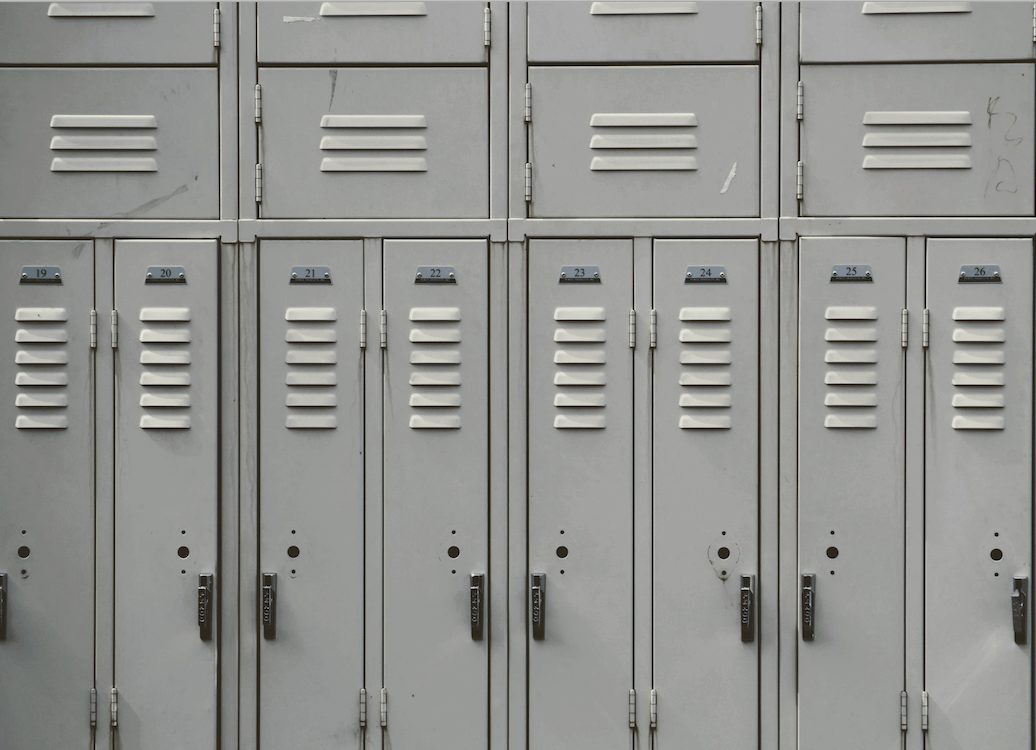
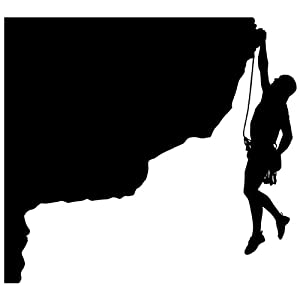 I picked my son up from rock climbing on a Wednesday just before he finished out the fall semester. “Vinnie,” I said, “It looks like you are going to fail some of your classes. Dad can probably help you figure out how to pass them, if you want. But, more importantly, I want you to know that there are other ways to become an educated person. Maybe this way isn’t working for you. There are other options for you. I don’t know what is happening for you at school, but we can do things differently. If you want to talk with me about options, we can get some dinner and talk.” To my complete surprise, my son started talking. He admitted that he was about to fail, and talked about how even though he was interested in the subject matter, he just couldn’t bring himself to comply with the assigned work. He described how the work felt arbitrary, and how he felt insulted by the “busywork” of school. He didn’t want to do the things they wanted him to do. I told him that we could consider a variety of options, and that we as a family would take the winter break to decide what would be the best option for our son.
I picked my son up from rock climbing on a Wednesday just before he finished out the fall semester. “Vinnie,” I said, “It looks like you are going to fail some of your classes. Dad can probably help you figure out how to pass them, if you want. But, more importantly, I want you to know that there are other ways to become an educated person. Maybe this way isn’t working for you. There are other options for you. I don’t know what is happening for you at school, but we can do things differently. If you want to talk with me about options, we can get some dinner and talk.” To my complete surprise, my son started talking. He admitted that he was about to fail, and talked about how even though he was interested in the subject matter, he just couldn’t bring himself to comply with the assigned work. He described how the work felt arbitrary, and how he felt insulted by the “busywork” of school. He didn’t want to do the things they wanted him to do. I told him that we could consider a variety of options, and that we as a family would take the winter break to decide what would be the best option for our son.
